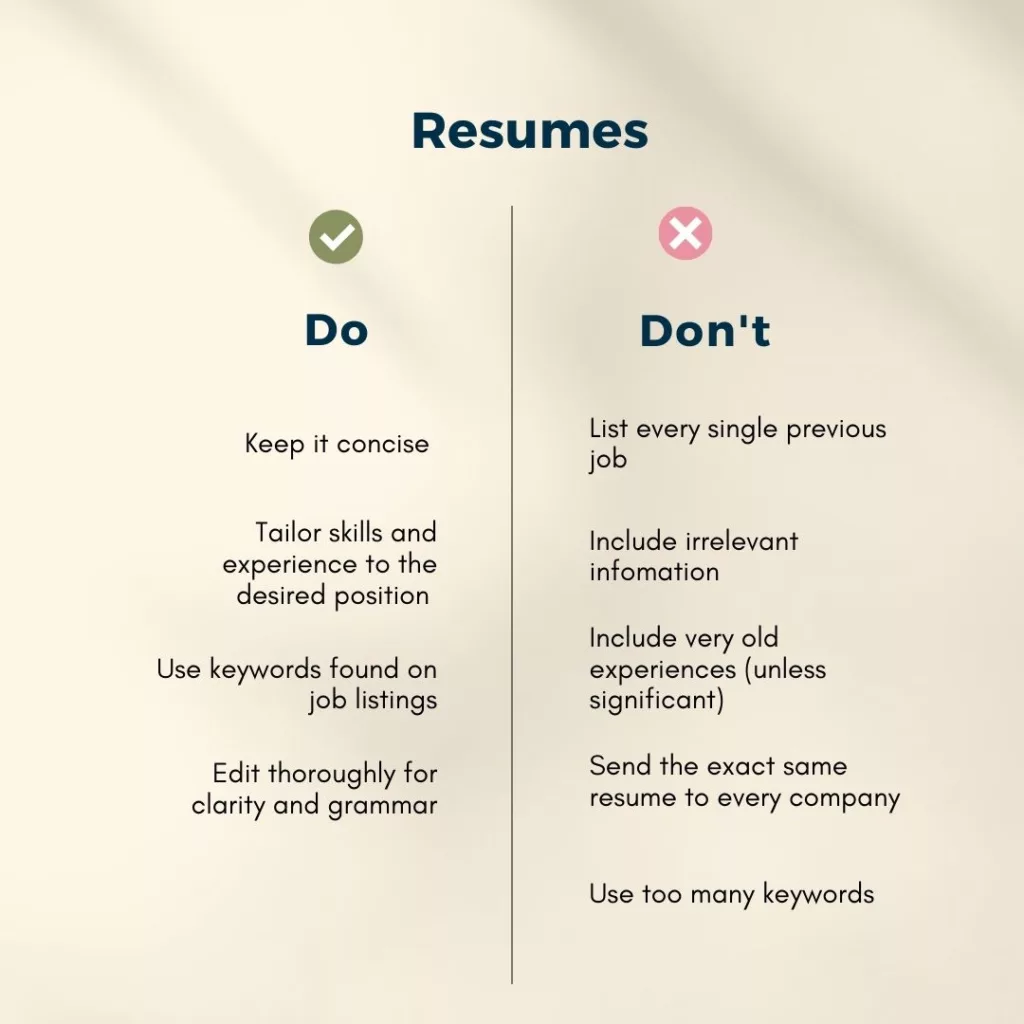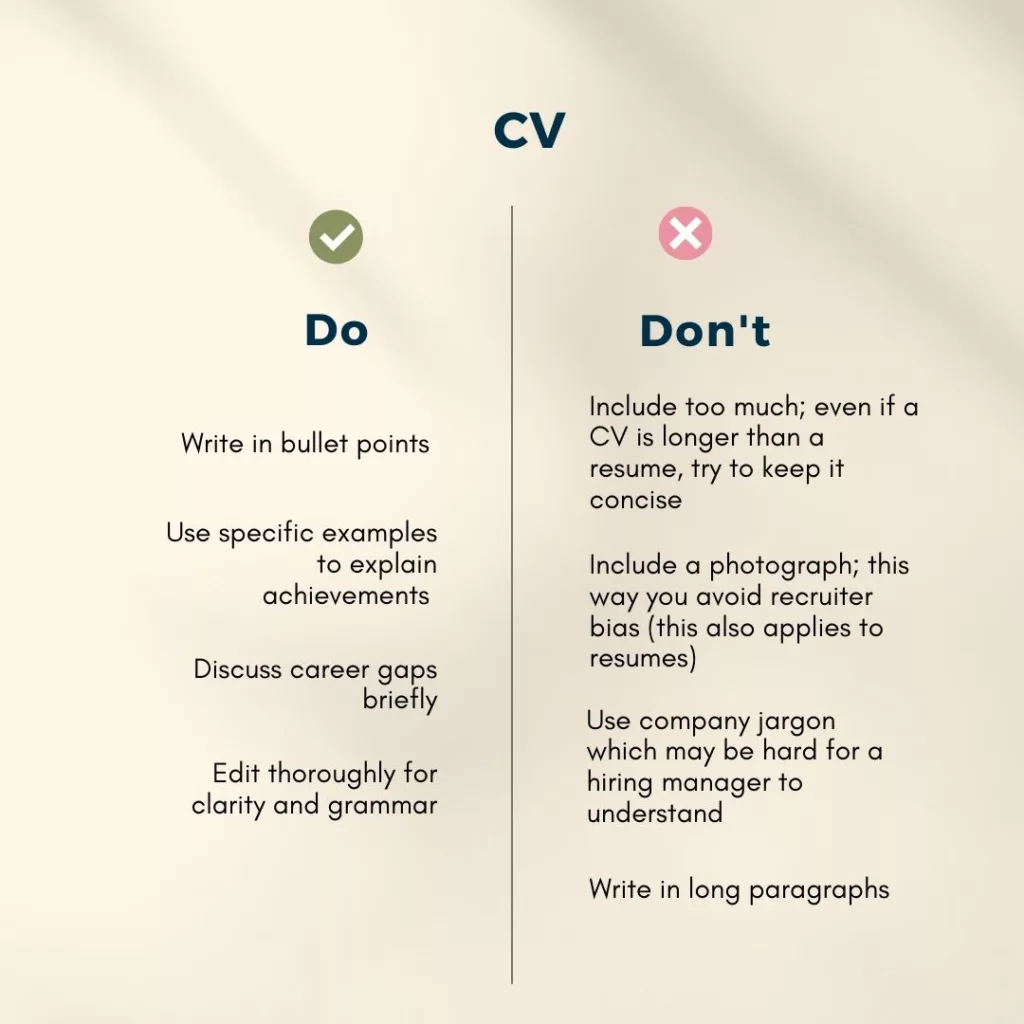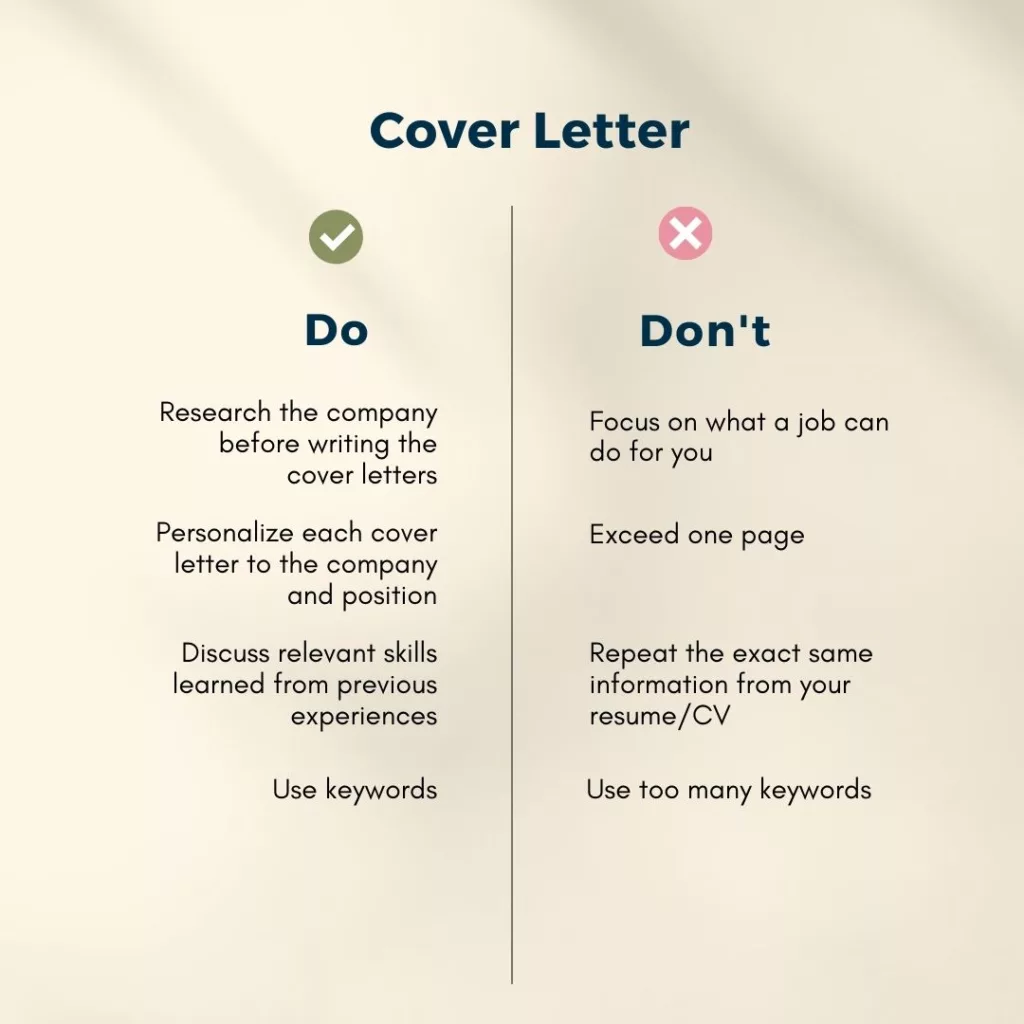Resumes, CVs and cover letters, oh my!
Resumes, CVs and cover letters are some of the most common and important job application documents. All three provide hiring managers with an overview of an applicant’s skills and experience. However, each of these documents function differently and have specific uses, making it essential to understand when and how to use them.
Read ahead to learn more about each type of document, their uses and strategies for writing them.
Resume
A resume is a job application document that briefly discusses an applicant’s qualifications. Resumes come in many formats, but all will include a summary of an applicant’s skills and experience. It will also have a list of an applicant’s previous jobs and education history presented in reverse chronological order.
A strong resume will highlight an applicant’s significant achievements in previous jobs. It is best to be specific and use clear and quantifiable examples of what was achieved. If you are applying for a social media position, for example, instead of saying “increased follower count” when discussing your accomplishments in a previous role, try saying “produced a 200 per cent increase in followers.”
A resume should always be as succinct as possible. One to two pages of content is often recommended, but the shorter, the better. However, making a resume too short can be an issue as well. If a resume doesn’t contain enough information, hiring managers may not believe the applicant is a good fit for the role. Find a balance by including all relevant information while minimizing any filler information.
For applicants without work experience, relevant volunteer experience can be included instead. Students can also include any academic organizations they’ve joined at their school(s).
Incorporating keywords from the job posting into your resume is also important. Many recruiters use Applicant Tracking Systems (ATS), software designed to scan resumes for certain keywords. However, ensure you don’t overload your resume with keywords, as some ATS may reject it. Instead, place keywords organically throughout your resume.

CV
A CV, or curriculum vitae, provides employers with similar information found on a resume. The main difference is that a CV is much more extensive in scope. Resumes are usually only one to two pages, while most CVs are at least two to three pages long.
Like a resume, a CV describes an applicant’s previous work experience in reverse chronological order while highlighting their relevant skills, achievements and educational background. However, unlike a resume, a CV has a much greater focus and goes much more in-depth on an applicant’s research, skills and experience.
In Canada, a CV is usually used for academic, medical, scientific or research-based positions. Information in the CV should be relevant to the desired field of work and the specific job being applied for.

Cover Letter
A cover letter often accompanies a resume or CV and is used to explain why an applicant is a good fit for a company. A cover letter allows is a good place for an applicant to connect the skills or experience listed on their resume/CV to the position requirements. When writing a cover letter, it is best to provide specific examples of how any skills learned in previous jobs may benefit the company.
Cover letters also explain how an applicant’s goals and values align with a company’s and an applicant’s motivations behind applying. This allows companies to get a sense of an applicant’s personality and whether the applicant would fit well in their work environment.
Not all job applications require cover letters, but they are a good way for an applicant to show a company why they would work well together and that the applicant is willing to put in extra work.

All three of these application documents are important to know and understand thoroughly. These documents are a company’s first impression of an applicant, so set aside enough time to make your resume, CV or cover letter as polished and professional as possible. This way, you can demonstrate why you’re the best fit for the job, land that interview and embark on a new professional opportunity!

Kyle Quilatan
Kyle is a reporter for Business Hub. He enjoys art, music and reading, and is prepared to take a nap at any given time.

